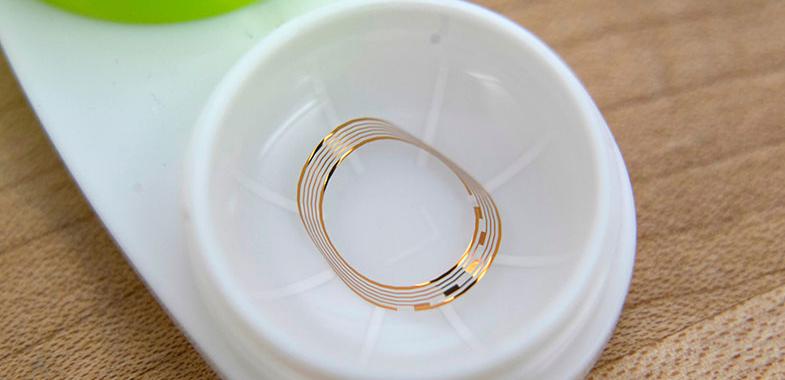
How smart contacts could transform glaucoma and diabetes care
Smart contact lenses may be breaking out of the world of science fiction.
But instead of acting as wearable computer screens, these contacts may provide meaningful insight and innovative treatment options for major diseases. Research is underway to develop smart contact lenses specifically tailored for two conditions: glaucoma and diabetes.
“The development of contact lenses that may aid in the treatment of glaucoma is a novel and fascinating idea,” said Dr. Sonia Rana, glaucoma and cataracts specialist at L.O. Eye Care.
But how exactly would these contacts work?
To help treat glaucoma, a smart contact lens would be fitted with a gold insert around the edge of the lens. The gold acts as an electrode, receiving an electromagnetic field from a specially-designed pair of glasses. The glasses and the contact lens create a current, which can stimulate muscles around Schlemm's canal (the structure where fluid leaves the eye). By stimulating these muscles, the device can increase the amount of fluid leaving the eye and decrease the pressure commonly experienced by patients suffering from glaucoma.
“The device would act on the outflow canal in a unique way and may offer an entirely new way of treating the disease,” Dr. Rana said.
The design was developed by Bionode, a startup affiliated with Purdue University. The group is currently working to secure funding for further clinical research.
“The concept is intriguing, however if and how it would actually perform in the real world has yet to be determined by a clinical trial,” Dr. Rana said. “I’m looking forward to seeing the results and how this device could add to our toolbox for treatment!”
For patients with diabetes, smart contact lenses could mean no more pricked fingers.
“The use of a ‘smart contact lens’ to monitor glucose levels could prove to decrease the burden of blood sugar monitoring in diabetic patients,” Dr. Rana said.
The device includes an antenna and rectifier that work together to capture radiofrequency signals from a transmitter and convert the signals to electricity. This electricity powers a glucose sensor and a tiny green LED, which is visible in a mirror but doesn’t interfere with vision. When the glucose sensor registers elevated levels in tears, the LED turns off, and the individual is warned to adjust their insulin levels. Currently, the Ulsan National Institute of Science and Technology in South Korea and Google are both researching this technology.
“The largest challenge to this type of technology is to make it user-friendly in both the hardware required to make it work, as well as the software to make the data useful,” Dr. Rana said.
L.O. Eye Care is always keeping an eye out for the latest state-of-the-art medical technology to serve our patients. While ophthalmologists like Dr. Rana are optimistic about the future of these innovative products, there’s still a long process of research and quality assurance before products like smart contact lenses make it to patients at L.O. Eye Care.
“Technology is advancing so that this may soon be a reality,” Dr. Rana said. “But work still needs to be done to get this type of product out for patients to make use of in a meaningful way.”
Smart contact photo from AAO.org.